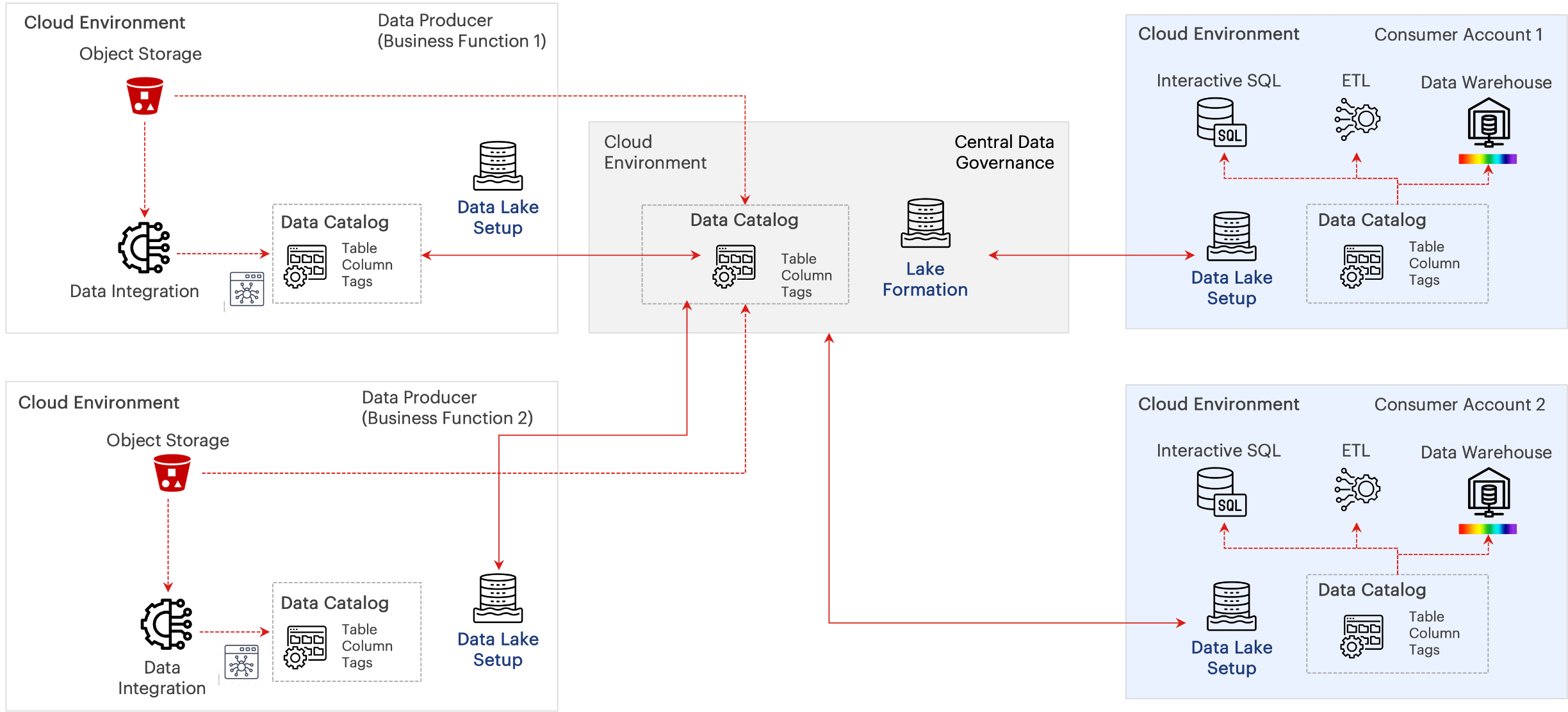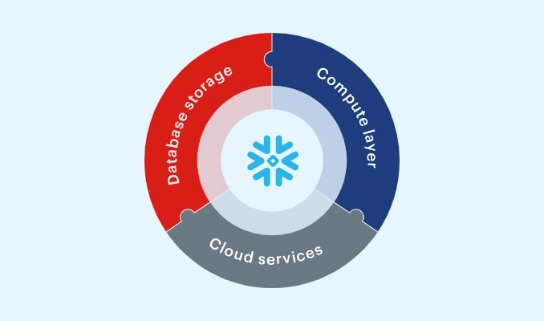Data Mesh
A decentralized framework to manage data as productsHome / What we do / Data strategy
A domain-oriented data ownership and architecture, to increase the agility and responsiveness of data teams
Centralized and monolithic data platforms are often characterized by a lack of agility, scalability, and flexibility, which can lead to data silos, slow innovation cycles, and high maintenance costs. Data mesh enables data-driven organizations to scale and innovate by applying distributed domain-driven design, product thinking, and self-serve platform design to data. Data mesh also empowers domain teams to own and share their data as products. Sigmoid can assist you in implementing data mesh by applying the principles of data engineering, data strategy and cloud data warehouse to unlock the full potential of enterprise data with robust governance.
Core components of a data mesh

Data as a product strategy
Apply product philosophy and design thinking to improve the quality, usability, and scalability of data.

Domain-driven data ownership
Organize analytical and operational data based on domains, allowing each team to be accountable for their own data.

Self-service data infrastructure
Enable creation of domain-agnostic functionality, tools, and systems to create, implement, and manage data products for all domains.

Unified governance
Automate the data governance system and make sure that all data products can work together effectively across domains.
Sigmoid’s Data Mesh Framework
Convert your data into consumable information at all user levels using data mesh. Our data mesh framework helps to automate the data lifecycle, organize and analyze data, even if it resides on the cloud.

Customer success stories


Omnichannel marketing data hub for campaign optimization
Sigmoid built a centralized data platform on Azure with automated data pipelines to optimize various omnichannel marketing campaigns’ ROI for a leading medical technology company.
- 5% increase in funnel conversion
- 500 data pipelines automated
- Faster integration of new datasets


Data hub on AWS enables near real time tracking of 20+ KPIs to improve sales performance and customer satisfaction
Sigmoid created a data hub on AWS for field sales, regional sales and marketing leaders with enhanced visibility into supply and demand of products across stores for over 100 field sales, account owners and regional heads.
- 90% improvement in query performance
- 80% coverage of retailers in the USA
- 5x cost reductions from decommissioning on-prem data centers


Centralized data lake and automated data pipelines drive real-time KPI monitoring through a Supply Chain Control Tower
Sigmoid optimized logistics management by re-architecting the data platform and building robust and scalable data pipelines for industrial gas and equipment suppliers.
- 1 month to real-time KPI visualization
- Enhanced tracking and reporting capabilities
- Reduced costs by streamlining freight reconciliation process
Successfully implementing a data mesh helps enterprises monetize their data products
Identify the critical domains
Pay immediate attention to critical domains that generate the highest revenue or have the most significant impact on the business.
Build specialized data hubs
Start with creating a domain-specific data hub to collect, process and analyze data from various sources and then scale it across all domains.
Assign domain ownership
Allocate a dedicated domain owner to each data hub who will own the decisions regarding data quality, access, and usage.
Expand to other domains
Scale your data hub across other domains while updating data contracts for the new domains to maintain consistency across the mesh.
Improve and scale continuously
Review and refine the architecture of the data hubs periodically to ensure it meets the evolving needs of the organization.







